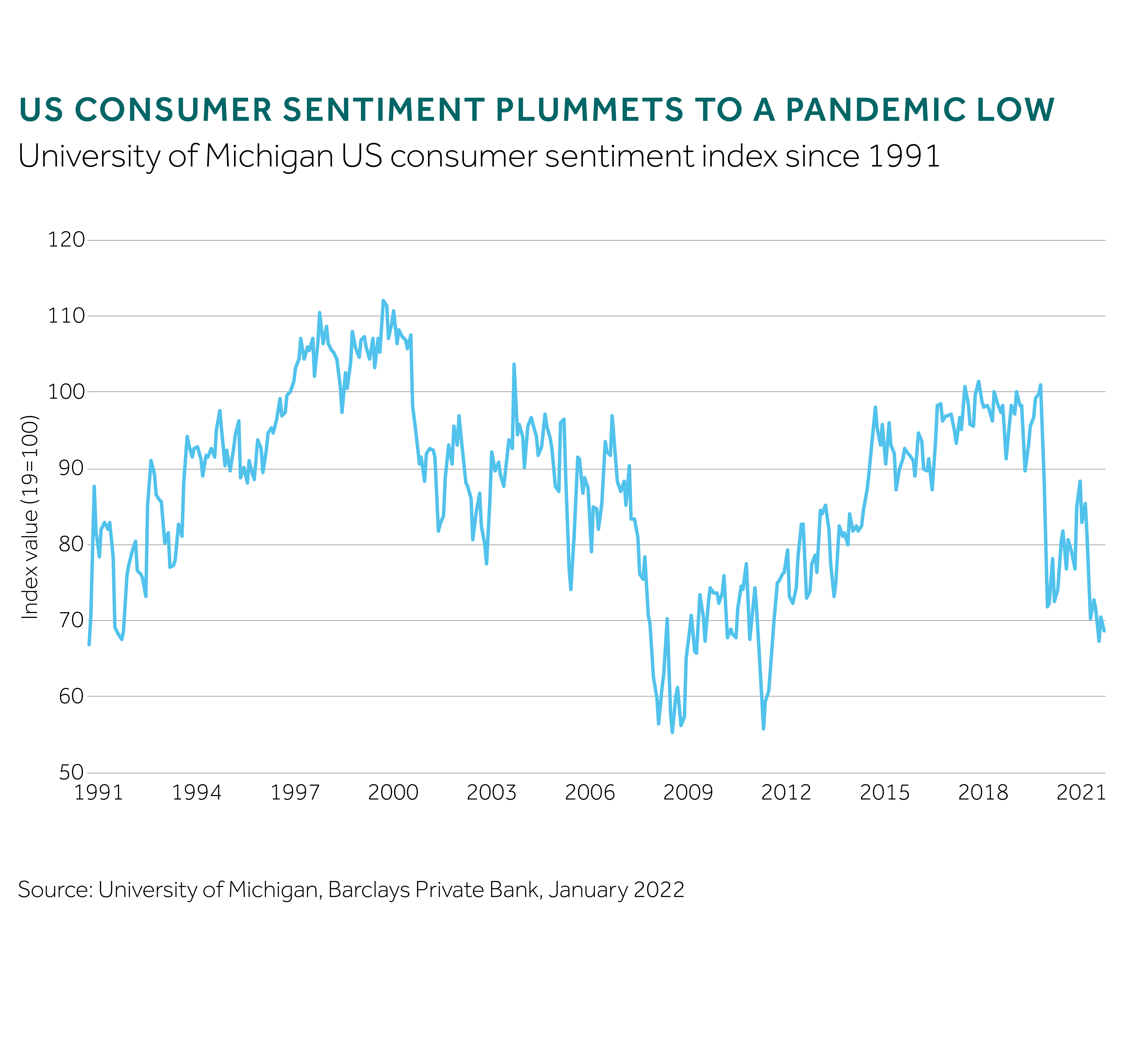It has been a bumpy start to 2022. With inflationary pressures proving to be more persistent than initially anticipated, central banks are becoming increasingly hawkish, and higher interest rate expectations have troubled financial markets.
The year has already seen the 10-year Treasury yield climb substantially. A violent sector rotation to value from growth stocks has seen much dispersion between sectors and styles in equity markets. The S&P 500 and the Nasdaq indices are down significantly, the latter now in correction territory, as the technology sector bears the brunt of the underperformance.
Concern is natural
Investors, buoyed by another positive year for global equities in 2021, may be asking two key questions: 1) does the rotation to value have further legs?, and 2) is it time to make changes to portfolios?
We expect the rotation to persist, with inflation unlikely to peak until later this year, and central banks will continue tightening. That means that a pivot back to long-duration assets, such as growth stocks, may be unlikely in the short term.
Responding to anticipated portfolio losses in a portfolio by changing investments can seem a natural reaction at such times. Why not act if you can stem underperformance or losses in the short term? Especially if the rotation trade is expected to continue. However, selling out of investments or playing the rotation trade may be a risky strategy.
Why are you selling?
For those who may be considering selling out of investments in response to market turbulence, it is worth remembering that selling out should not be thought about in isolation. If you do not have a plan for the assets after selling them, a decision to sell implies investing in cash.
When deciding whether to sell assets, you might consider the following questions:
- Are there other assets that I believe will generate superior returns?
- What returns may I miss out on by selling these assets?
- What may I miss out on from holding onto the existing holdings?
- If I don’t want to reinvest in the markets, am I more likely to achieve my long-term goals by holding cash or the investments I will be selling?
The final question is an important one in the context of the present inflationary scare. In times of turbulence, cash provides safety. But is safety likely to help you to reach your long-term goals?
Is your cash working for you?
If an investor’s aim is to primarily protect, and then grow wealth, cash may be an attractive asset. But it is worth noting that the current market moves have been primarily driven by more persistent inflation. In an inflationary environment, a sure way to lose wealth is to hold cash. With higher inflation expected, the drag on wealth will likely be more than in the recent past.
We believe that being invested provides the best chances of achieving your long-term goals. The power of compounding means that missing just a few of the best days of market performance can significantly harm long-term growth.
The importance of an investment philosophy
Ultimately, for investors to be resilient in the face of changing market conditions, their portfolio should be resilient to such conditions.
We expect quality growth companies to profit investors over the long term, and in various market conditions. The search for such quality businesses involves finding those with above-average growth, healthy cash flows, low gearing, and an ability to reinvest at a high return on invested capital.
While changes in the macro and market landscape can make sectors relatively more or less attractive, we believe that over the long term, quality companies will prevail, outperforming both growth and value stocks.
For long-term investors that still want to act on short-term, tactical opportunities, a core-satellite approach may be an option to consider. In such an approach, the core portfolio aims to generate the bulk of the long-term returns. Meanwhile, a satellite holding takes more opportunistic investments. This approach can strike a balance between trading and investing, and minimise the impact of biases mentioned above.
A strategy, as mentioned in our Outlook 2022 and seen during the present rotation, would be adopting a cyclical tilt (financials, energy, industrials, and basic materials) in portfolios, and a tilt away from low-growth, low-profitability businesses.
Are you holding the right mix of assets?
The best preparation for the year ahead for investors is to examine existing portfolios, and ask whether they are holding the right mix of assets to reach their long-term objectives. Additionally, is the portfolio built to withstand different, and maybe challenging, market conditions, and will you be able to see it through?
We continue to reiterate the importance of diversification. By holding quality assets across a range of asset classes, regions, and sectors, an investor’s portfolio is designed to be resilient across market conditions. While some assets may fall out of favour occasionally, others may help to smooth returns. Reducing volatility through a diversified portfolio also has behavioural benefits; a portfolio that experiences less volatility can help at an emotional level, and make it easier to hold onto investments even during turbulent conditions.
For those tough enough to stay the course, their resilience will likely be rewarded.


